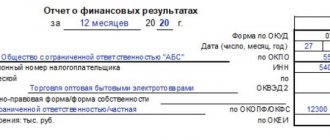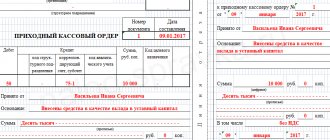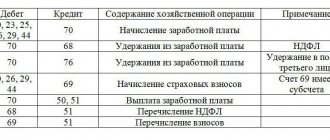Modern business conditions are characterized by the desire of many companies to overcome crisis phenomena and develop successful prospects for the development of debt policy, since borrowing funds is part of the business activities of any company, allowing it to maintain the capital structure, financial condition and creditworthiness. A necessary element of such a policy is to provide an information base for determining the need to attract borrowed sources with the need to maintain the financial flexibility of the company and diversify sources of financing.
The implementation of such tasks is possible only if the enterprise is provided with an accounting and analytical base that allows recording the company’s economic activities related to debt obligations, reflecting the costs of attracting debt sources.
The essence of the concept
Debt capital represents various debt obligations of the company, which are formed through external sources of financing.
Attracting borrowed capital within reasonable limits is profitable, since the cost of its servicing (interest paid) is written off as expenses, that is, it reduces taxable income.
An increase in the share of borrowed capital in the structure of financing sources entails an increase in the financial risk personified by this company, a decrease in reserve borrowed capital and an increase in the weighted average cost of capital of the company.
Classification
The main features for identifying types of debt capital are reflected in the table below.
| Sign | Typology |
| Period (term) |
|
| Goals |
|
| Sources of attraction |
|
| Form of attraction |
|
| Attraction methods |
|
| Security form |
|
Methods for raising borrowed funds
Borrowed funds are most often raised to reproduce current assets.
The company's main creditors are:
- banking and other financial and credit institutions;
- consumers of products and supplier companies (commercial lending);
- stock market (placement of securities).
No matter how funds are raised, they must be provided with appropriate assets.
Security becomes especially important when raising funds directly in cash.
There are various methods of raising borrowed funds. They are involved in order to ensure the economic activities of the company in the following forms:
- funds in national currency;
- funds in foreign currency;
- commodity form (deliveries with deferred payments);
- obtaining fixed assets under leasing or rental conditions;
- other forms (receipt of intangible assets with a certain deferment).
The company chooses methods for raising funds independently, based on the goals and characteristics of its business activities.
Depending on the degree of security of the funds raised, it is customary to distinguish:
- unsecured loans. They are issued, as a rule, to companies that have a good track record of carefully fulfilling contractual terms;
- secured loans. They imply the following forms of security: guarantees to the creditor, guarantees, material security.
The regulatory basis for accounting for borrowed capital is:
- Civil Code,
- Tax Code, Regulations No. 34n, 43n, 60n,
- Accounting provisions “Accounting for loans and credits”, “Expenses of the organization”, “Principles of accounting for fixed assets”.
How is it reflected in the balance sheet?
Borrowed capital is reflected in the balance sheet using sections 4 and 5 of the balance sheet. Section 4 is intended to display long-term liabilities, and 5 – for short-term liabilities.
A separate line that reveals the value of material assets attracted from outside to make a profit is not provided in the form of a balance sheet. However, based on the report data, you can calculate the total amount of borrowed capital.
Since borrowed capital is the total expression of the 4th and 5th sections of the balance sheet, the formula for its calculation can be presented as follows. Borrowed capital and balance sheet formula looks like this:
ZK = page 1400 + page 1500
Where:
- ZK – borrowed capital, t.r.;
- p. 1400 – long-term liabilities, t.r.;
- line 1500- short-term liabilities, t.r..
Thus, borrowed capital is understood as the monetary form of debt obligations, which can be calculated as the sum of sections 4 and 5 of the balance sheet. This indicator is reflected in the balance sheet by items by funding source.
The amount of borrowed capital in the balance sheet in lines 1400 and 1500 represents the amount of financial liabilities that can be formed in the following form:
- loan agreements;
- loan agreements;
- commodity loan agreements.
This type of capital is a powerful resource that a company may need in any situation.
Borrowed capital in the balance sheet is divided into categories and lines:
- line 1410 reflects outstanding long-term loans;
- line 1420 reflects deferred debt obligations for VAT;
- page 1430 keeps records of estimated liabilities;
- line 1450 takes into account other long-term liabilities;
- line 1510 takes into account short-term borrowed funds, which reflect the loan body and interest;
- line 1520 keeps records of short-term accounts payable;
- page 1530 keeps records of debts under obligations to the participants of the company;
- line 1540 keeps records of estimated liabilities for less than 12 months;
- line 1550 reflects short-term payable debt obligations that were not previously taken into account in lines 1510-1540.
How is the debt concentration ratio determined?
Large companies pay a lot of attention to financial ratio analysis, which can be used to assess the financial condition and financial stability of the company.
Financial stability is a state in which a company does not experience serious dependence on creditors and can freely and competently manage its own capital.
To analyze financial stability, the following coefficients are calculated:
- autonomy;
- ratio of debt and equity capital;
- concentration of equity capital;
- concentration of debt capital;
- debt capital structures;
- maneuverability of own working capital.
To calculate the indicators, you will need the enterprise’s balance sheet for at least two years. To assess the dynamics of indicators and make a forecast, it is necessary to know the indicators for at least two consecutive periods.
Example of calculating the debt capital concentration ratio
The debt capital concentration ratio is calculated as follows:
Кзк = ЗК/ВБ, where ЗК – borrowed capital, ВБ – balance sheet currency
The balance sheet currency is the total amount for the active or passive part of the balance sheet. When calculating this indicator, long-term and short-term liabilities of the company are included in the borrowed capital. The value of the indicator should not be more than 0.5, that is, the share of borrowed capital in the total source of financing should not exceed 50%.
Banks, when providing a loan, necessarily evaluate the share of borrowed funds in order to understand whether the company can pay off its debts.
Typically, the higher the share of borrowed capital, the higher the cost of capital, as banks try to hedge their bets and compensate for possible risk by increasing interest rates. Let's assume that data about the company is known for two years.
As of December 31, 2012, the value of borrowed capital is 540 million rubles, and the total capital of the company is 1256 million rubles. In 2013, the company took out a long-term loan; as of December 31, 2013, the value of borrowed capital is 890 million rubles, and the total capital of the company is 1,424 million rubles.
Using the debt capital concentration ratio, it is necessary to determine how the capital structure has changed. The debt capital concentration ratio at the end of 2012 will be: 540/1256 = 0.43, the value of this indicator in 2013 will be: 890/1424 = 0.63
Analytical indicators
Among the informative indicators taken into account when assessing debt capital on the balance sheet are:
- debt ratio. The calculation of this value corresponds to the formula:
Kdn = D/EBTIDA,
Where:
- D – amount of debt obligations, t.r.;
- EBTIDA is an analytical indicator defined as the difference between the company’s profit before interest, taxes and depreciation, etc.
The standard for this coefficient is defined within the range of 2-2.5. Debt can be considered long-term loans and borrowings (in international practice), short-term loans and borrowings (in Russian practice).
- indicator of financial leverage (debt capital ratio on the balance sheet), which is determined by the formula:
FR = (DO + KO) / SK,
Where:
- DO – long-term liabilities, t.r.;
- KO – short-term liabilities, t.r.;
- SK – equity capital, t.r.
The recommended standard is 0.25 – 1. With a value of 0.25, we can conclude that the debt load is favorable for the company, which indicates a positive assessment of its creditworthiness. With a value close to 1, the load is considered maximum. If the value of the debt capital ratio according to the formula on the balance sheet goes beyond 1, then creditworthiness is assessed negatively.
- share of financing of fixed assets through long-term loans:
D = DO / VA,
where VA – non-current assets, i.e.
Attracting loans to finance fixed assets is justified, since these amounts are repaid further due to the cash flows created by these fixed assets.
- the ratio of working capital and short-term loans is determined by the formula:
SOB = OA / KO,
where OA is the company’s working capital, i.e.
The standard for this indicator varies from 1.5 to 2.
As a result of analyzing these indicators regarding the use of debt obligations of the company, it is possible to draw a conclusion about its creditworthiness. The information base obtained on the basis of calculating the presented indicators also allows management to develop a number of measures aimed at increasing the creditworthiness of the company.
Concentration ratios of own and borrowed funds: relationship between indicators
Very close in essence and economic meaning to the coefficient of concentration of borrowed funds is another indicator - the coefficient reflecting the concentration of the enterprise's equity capital. It is calculated by the formula:
None KS - coefficient reflecting the concentration of equity capital;
SK is the amount of the company's equity capital. The IC indicator is located on line 1300 of the enterprise’s balance sheet.
The higher the KS coefficient, the better. It is welcome if its value exceeds 0.5 (that is, the company has 50% or more of its own capital). What is the optimal value of the coefficient reflecting the concentration of debt capital?
[custom_ads_shortcode3]
Interaction of equity and debt capital
The relationship between these two structural elements represents the role of financial leverage, which is present in companies that do not have the required amount of finance to conduct business or to expand it. In such a situation, borrowed funds meet the needs of the company in the current period and bring profit. But the size of the ratio between equity and debt capital on the balance sheet plays a big role and affects the financial stability of the company.
If the amount of borrowed funds significantly exceeds equity, bankruptcy is possible. At the same time, the risky policy of using borrowed capital is the most profitable.
The following options for using levers are possible:
- positive application: in this case, the income from borrowed funds exceeds the fee for their use, the company makes a profit;
- neutral application: income from borrowed funds is equal to the cost of their maintenance;
- negative application: here the company incurs losses, the use of the loan does not pay off.
Concept of capital and reserves
Capital should be understood as the sum of the enterprise's own and borrowed funds.
Equity is the monetary value of a company's assets that are owned by it.
Capital and reserves in the balance sheet is an information block that consists of 7 lines.
When calculating equity capital, the difference between the value of all property on the balance sheet (the company's assets) and the company's liabilities is obtained.
Any financial and economic activity requires constant investment of capital. Investments are required to maintain and expand the production process and improve its efficiency and introduce innovation. One of the main tasks of financial management is the development of the investment budget, support and optimization of investments to attract financial resources, and optimization of the capital structure.
The choice of sources of financing is influenced by various factors, including the industry and scale of the enterprise’s activities, technological features of the production process, specifications of products, work with banking structures, reputation in the market, etc.
The structure of the “Capital and Reserves” section of the balance sheet used by the enterprise is determined by all financial assets that have an active impact on the final result of the company’s activities. It affects the profitability of assets and funds, forms the ratio of profit and risk in the process of enterprise development.
The financial structure of capital and reserves on the balance sheet is the structure of the main sources of funds, i.e. the ratio of equity and debt capital.
The financial capital of an enterprise consists of its own and borrowed capital.
The balance sheet item “Capital and reserves” in the form of equity capital consists of the value of authorized, reserve and additional capital. In addition, it includes the value of retained earnings received from the operation of the enterprise. Debt capital is an enterprise's accounts payable to individuals and legal entities, including banks.
Provisions are an estimate and explanation of individual items in a business's accounting records aimed at covering expenses and payments due.
Directions for optimizing debt capital
In order to increase the creditworthiness of a company using an information base on debt obligations, it is proposed to improve methodological approaches to reflecting and evaluating the activities of a company with borrowed funds. In order to manage debt obligations and ensure the creditworthiness of a company, it is necessary to generate data of different degrees of generalization: consolidated and more detailed.
To increase the information content of the data, it is recommended to revise the organization of analytical accounting of the company’s debt obligations by changing the second-order accounts and separating the third-order (and even fourth-order) accounts.
Borrowed capital in the balance sheet: formula, line
Modern business conditions are characterized by the desire of many companies to overcome crisis phenomena and develop successful prospects for the development of debt policy, since borrowing funds is part of the business activities of any company, allowing it to maintain the capital structure, financial condition and creditworthiness. A necessary element of such a policy is to provide an information base for determining the need to attract borrowed sources with the need to maintain the financial flexibility of the company and diversify sources of financing.
The implementation of such tasks is possible only if the enterprise is provided with an accounting and analytical base that allows recording the company’s economic activities related to debt obligations, reflecting the costs of attracting debt sources.
Suggestions for optimizing accounting
The proposed structure for constructing accounts for accounting for a company’s debt funds in order to increase its creditworthiness is as follows:
- first-order accounts, which combine all possible data on the state of the company's borrowed funds (both long-term and short-term);
- second-order accounts, which are capable of reflecting accounting information on generalized types of debt obligations, such as: loans and borrowings;
- third-order accounts are capable of detailing information on a more specific type of obligation, for example, a commercial loan, a loan agreement, etc.;
- fourth-order accounts, which are capable of recording information on various types of payments, for example, debt, interest, fines, etc.
Such a grouping of accounts for a company will allow a more in-depth study of analytical accounting for all types of debt obligations of the company. It can also improve control in this area, increase the efficiency of debt management of the company, and strengthen creditworthiness. It is recommended to improve the control system by introducing internal reports in the company, as well as the dynamics and structure of borrowed funds. Such reports can be prepared every month and submitted to management by the 25th. They will allow management to monitor timely negative trends in the structure of borrowed funds and capital of the company, eliminate them in a timely manner, thereby increasing the efficiency of debt management and the company’s creditworthiness indicators.
Improving management efficiency
To increase the efficiency of debt management, it is possible to introduce a document flow schedule and introduce the position of an accountant for debt obligations. The duties of such an accountant may include:
- control of the correct processing of primary documents on the company’s debts;
- checking the correctness of interest calculations;
- checking the correctness of recording of transactions accounting for the company's debts.
The introduction of these procedures helps reduce the percentage of errors and inaccuracies in accounting.






